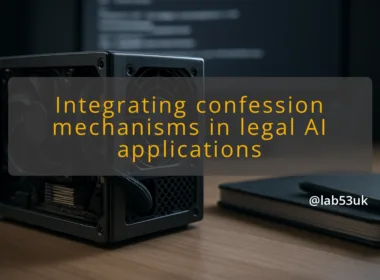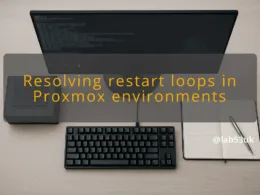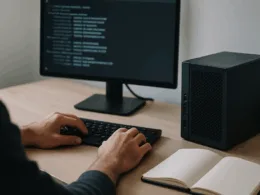Maximising Your SwitchBot S10: Beyond Basic Matter Integration
I set this up because the marketing promised a lot and the reality needed fixing. Short version: the SwitchBot S10 can be useful under Matter, but defaults and assumptions strip most of the value. This guide shows how I get more from SwitchBot S10 integration, what to check first, and how to recover advanced features without buying a new robot.
Getting Started with SwitchBot S10 Integration
Understanding the SwitchBot S10 Capabilities
The S10 is a robot vacuum with the usual hardware: suction, navigation and a dock. It also has firmware that exposes commands to companion apps and, since recent updates, to Matter-compatible controllers. With SwitchBot S10 integration via Matter, expect basic controls to appear first: start, stop, pause and send-to-dock. Advanced cleaning modes, map editing and spot cleaning are often not exposed by default through Matter.
Practical check: open the SwitchBot app, check for the S10 firmware version and enable any “cloud” or “local control” toggles the manufacturer provides. Make a note of what the app can do that Matter currently cannot. That list becomes the feature gap to recover later.
Overview of Matter Protocol
Matter is a unifying protocol for smart devices. Its aim is to standardise basic controls and discovery across ecosystems. It excels at consistent on/off, brightness, temperature and simple commands. It does not guarantee vendor-specific advanced features. Treat Matter as the lowest common denominator unless a vendor adds bespoke clusters or extensions.
If you rely on specific advanced features, assume you will need a bridge or direct integration to get them. Use Matter for simple automations and device discovery, not for complex vacuum workflows.
Setting Up Your Smart Home Environment
I set up an environment that keeps local control first. Key components I use:
- A reliable Wi-Fi network with a stable DHCP lease for the S10.
- A single controller for automations (I run Home Assistant locally).
- The SwitchBot app to perform initial pairing and firmware updates.
Step-by-step pairing checklist:
- Update the S10 firmware in the SwitchBot app.
- Add the S10 to the SwitchBot app and verify basic controls work.
- Enable Matter on the S10 via the app if the option exists.
- On your controller (for example Home Assistant), add the Matter integration and perform device setup.
Verification: after pairing, use the controller UI and the SwitchBot app to issue the same basic command (start and dock). Confirm both succeed and the S10 responds within a few seconds. If the controller cannot discover the device, check mDNS/Thread/Zigbee radios depending on your network and controller type.
Preparing for Integration
Expect gaps. Make a simple spreadsheet or note with three columns: feature in SwitchBot app, available via Matter, and workaround. Common gaps are map handling, custom cleaning sequences, and carpet-sensitive modes. For each missing feature, plan a recovery route:
- Use Home Assistant with the native SwitchBot integration if available.
- Run URL/API calls to the SwitchBot cloud if the API is public.
- Use automations that combine simple Matter commands into higher-level actions (start + wait + move to dock).
Example automation idea: to mimic a quick clean, issue start; after 10 minutes issue spot-clean (if available) or send to dock. Test each automation and add error handling — check the vacuum state before issuing a dock command.
Troubleshooting Common Integration Issues
Identifying Integration Pitfalls
Common integration pitfalls I see are: the device appears in the controller but most functions are missing; the S10 is discoverable but loses connectivity intermittently; or the S10 reports wrong states. Start with the basics:
- Power and Wi-Fi signal at the dock.
- Correct time and timezone on your controller.
- Firmware parity between device and app.
When features vanish after a reboot of the controller, suspect ephemeral credentials or a Matter pairing mismatch. Re-pairing after a factory reset on the S10 sometimes clears it, but only after you reapply any required manufacturer settings.
Resolving Compatibility Issues
If the S10 only exposes minimal commands via Matter, you have three practical paths.
-
Native SwitchBot integration
- Check whether SwitchBot provides a local integration for Home Assistant or an official component. Local integrations usually expose richer features than Matter.
- Install the integration and compare available services against Matter. Verify you can control maps and modes.
-
Cloud API fallback
- If local integration lacks features, use the SwitchBot cloud API for advanced commands. This requires an API token and planning for rate limits.
- Implement authenticated scripts or Home Assistant REST commands to call the cloud endpoints.
-
Composite automations
- Combine simple Matter actions into useful routines. For example, run a pre-clean sequence: disable no-go zones in the app, start vacuum, then re-enable zones after docking.
Verification steps: after changing integrations, run a small suite of tests — start, pause, return-to-dock, request battery state, and trigger any advanced action. Log each response and time to complete. If anything fails, revert and isolate the change.
Enhancing Functionality with Home Assistant
Home Assistant is my go-to for squeezing extra value from a robot vacuum. If Matter gives only basic state and commands, Home Assistant can:
- Expose the S10 as multiple entities (battery, vacuum state, map).
- Run complex automations (clean only when nobody is home, or run a vacuum after a specific device disconnects).
- Bridge missing features using scripts and API calls.
Concrete example: I created a script that checks battery > 30%, cleans a single room by issuing a zone clean through the SwitchBot cloud, then waits and docks. The script logs progress and retries on failure. That gives a near-native advanced feature set without relying solely on Matter.
Tips for Successful Automation
Keep automations idempotent and state-aware. A common mistake is issuing a start command without checking if the vacuum is already running. Use checks like:
- If vacuum_state is charging, wait until docked and battery > threshold.
- If vacuum_state is cleaning, skip the start command.
- Add retries with delays for flaky network calls.
Name automations clearly. Include an “audit” switch in Home Assistant that can pause all robot automations while you test.
Future-Proofing Your Smart Home Setup
Expect Matter to improve but not to cover every vendor feature. I future-proof by:
- Preferring local control options first.
- Keeping a fallback cloud API route for essential features.
- Isolating my automations so they can swap between Matter and native integrations without rewriting logic.
Final takeaway: treat SwitchBot S10 integration via Matter as a convenient baseline. Use Home Assistant or the SwitchBot API to restore advanced features. Test each change, keep logs, and build automations that check device state before acting. That approach turns a minimal Matter integration into something genuinely useful.






